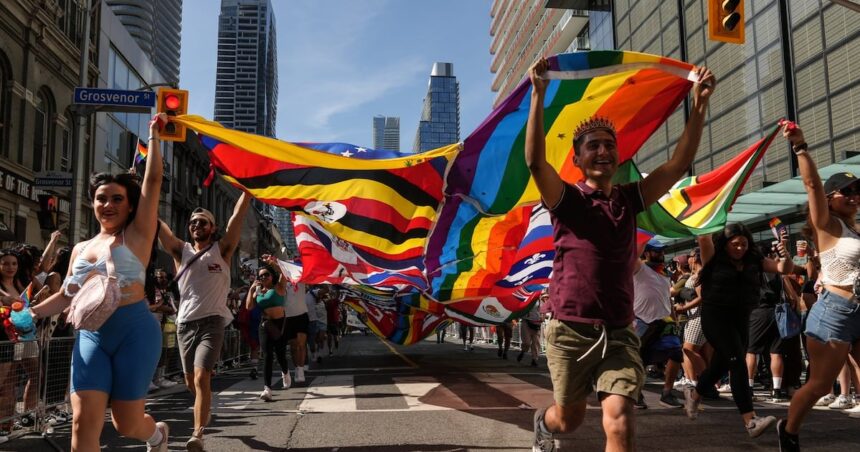As rainbow flags wave across Toronto’s streets this weekend, the celebratory atmosphere of Pride 2024 masks a troubling financial reality facing one of Canada’s largest LGBTQ+ cultural institutions. While thousands march in solidarity and celebration, Pride Toronto grapples with significant financial strain that threatens the very foundation of this decades-old tradition.
“We’re surviving, not thriving,” admits Sherwin Modeste, Executive Director of Pride Toronto, during an interview at the festival’s opening ceremonies. “The current financial situation is challenging, but we will not go anywhere. Pride is too important to this city and to so many communities who rely on this safe space.”
The organization’s financial difficulties became public knowledge earlier this year when Pride Toronto revealed it was facing a projected $700,000 deficit—a staggering figure that prompted immediate concerns about the festival’s future. This shortfall represents nearly a quarter of the organization’s annual operating budget, placing unprecedented pressure on staff and organizers.
The causes behind this financial strain are multifaceted. Corporate sponsorship has declined compared to pre-pandemic levels, with several major backers reducing their financial commitments. Simultaneously, the costs of organizing a major urban festival have escalated dramatically, from security requirements to infrastructure expenses.
“We’re experiencing the perfect storm of increased operational costs and decreased revenue streams,” explains financial analyst Marina Chen, who specializes in non-profit sustainability. “Pride Toronto is essentially being asked to do more with less, which is simply unsustainable in the long term.”
Despite these challenges, this weekend’s festivities proceeded with remarkable resilience. Sunday’s parade attracted tens of thousands of participants and spectators who lined the streets of downtown Toronto, demonstrating the enduring importance of Pride celebrations to the city’s cultural landscape.
The financial difficulties facing Pride Toronto reflect broader challenges within the Canadian cultural sector. Many organizations are struggling to rebuild after the pandemic while facing increased costs due to inflation and changing patterns of corporate philanthropy.
Community leaders have responded with determination to preserve the institution. A grassroots fundraising campaign launched last month has already raised over $150,000 from individual donors, though this represents only a fraction of the deficit.
“What we’re seeing is a community rallying around an institution they refuse to let fail,” notes city councilor Kristyn Wong-Tam. “But individual donations alone cannot sustain an organization of this size. We need structural solutions, including reliable public funding and renewed corporate commitment.”
Pride Toronto’s board of directors has announced a strategic review of operations, seeking to identify efficiencies while preserving the core programming that makes Pride essential to so many. This includes exploring new funding models and potential partnerships with other cultural institutions facing similar challenges.
The current situation raises important questions about the sustainability of cultural events in increasingly expensive urban centers like Toronto. As world news repeatedly shows, LGBTQ+ rights remain under threat globally, making the preservation of Pride celebrations all the more critical.
“This isn’t just about a party or a parade,” emphasizes longtime activist Gerald Richardson. “Pride is a declaration that we exist, that we deserve to be seen and heard. Its economic struggles reflect how easily marginalized communities can be forgotten when budgets tighten.”
As the festivities conclude and the planning for next year begins, the fundamental question remains: How will Toronto’s Pride celebrations evolve to meet these financial challenges while maintaining their essential role in advocating for LGBTQ+ rights and visibility? The answer may determine not just the future of Pride Toronto, but serve as a blueprint for cultural institutions nationwide struggling to balance mission with financial sustainability.










